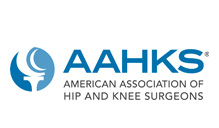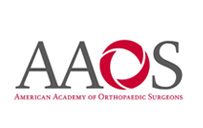An Overview of Shoulder Blade Pain
Shoulder blade pain doesn't always have an obvious cause. It can be a symptom of something serious like a heart attack or lung cancer. Or maybe you slept on it wrong or have poor posture at the computer.
How does rheumatoid arthritis affect the knees?
Rheumatoid arthritis (RA) is an autoimmune condition, meaning the immune system mistakenly attacks healthy tissues. RA in the knees may severely affect a person’s mobility.
Corticosteroid Injections of the Hip Linked to Rapidly Destructive Hip Disease
Although corticosteroid injections are commonly used to manage pain and inflammation in patients with osteoarthritis of the hip, a new study adds to concerns about the potential harmful effects of these injections.
Meniscal Repair Using Fibrin Clots Made From Bone Marrow Blood Wrapped in a Polyglycolic Acid Sheet
In recent years, we have performed meniscal repairs using wrapped fibrin clots in PGA sheet. We considered the use of wrapped fibrin clots with a PGA sheet to treat meniscus tears. The purpose of this paper is to introduce a step-by-step guide to our new delivery technique using fibrin clots.
Management of a Humeral Shaft Non-union with Concomitant Rotator Cuff Tear Arthropathy
In this article, we describe the unique presentation of an 83-year-old, right-hand dominant male with severe right arm dysfunction secondary to a humeral shaft non-union in the setting of ipsilateral CTA. The case highlights the options for, and difficulty in, managing these concomitant pathologies in a medically frail individual who has lost meaningful upper extremity function and independence because of this injury.
Common causes and treatments for a separated shoulder
A shoulder separation is an injury to the acromioclavicular joint on the top of the shoulder. The shoulder joint is formed at the junction of three bones: the collarbone (clavicle), the shoulder blade (scapula), and the arm bone (humerus). A shoulder separation occurs where the clavicle and the scapula come together.
5 Options for Knee Cartilage Replacement and Repair
Advances in orthopedic medicine provide many options for treating knee injuries. Some long-standing approaches include surgery to repair torn cartilage or knee joint replacement. In addition to these, there are now minimally invasive treatments using cartilage taken from elsewhere in the body or regenerated from a person’s own cells.
Stem Cells Used to Treat Avascular Necrosis of the Femoral Head
Collapsed femoral heads caused by osteonecrosis—otherwise known as avascular necrosis— unfortunately represent the root cause for approximately 10% of all hip replacements nationwide. Daniel Wiznia, MD, is utilizing a stem cell treatment at Yale School of Medicine and integrating new techniques along with 3D imaging technology as part of a joint-preservation procedure.
MidMichigan Health: Fall prevention strategies
Unfortunately, falls are all too common, especially among adults over the age of 65. About one in four adults over the age of 65 experiences a fall, and approximately 95 percent of all hip fractures are related to falls.
Can the use of computer navigation reduce revision rates for THA?
A retrospective review of data from the Australian Orthopaedic Association National Joint Replacement Registry suggests that the answer is yes, at least for revision total hip arthroplasty due to dislocation.






